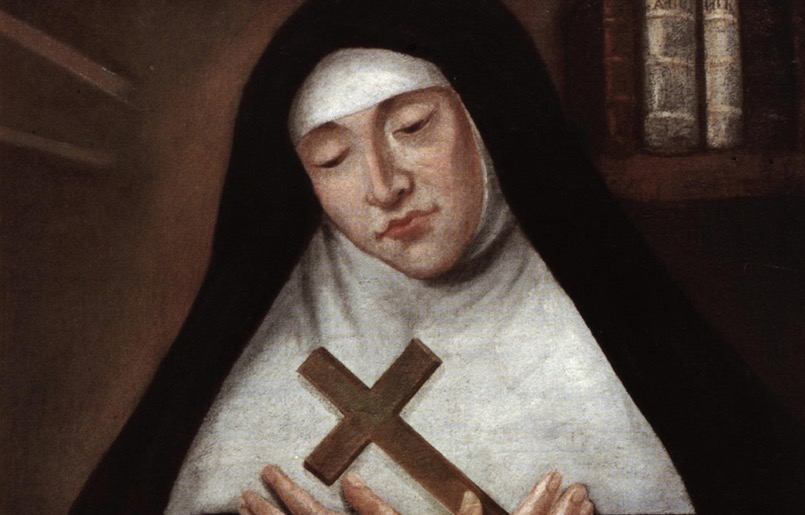Pope St. John Paul II noted at her beatification the rare blend of characteristics found in Marie Guyart: “wife, mother, widow, businesswoman, religious, mystic and missionary.”
The first woman to evangelize North America, Marie Guyart was a baker’s daughter born in Tours, France, just before the turn of the 17th century. She was a mystic from an early age. The Lord once appeared to her and desired that she be totally his, to which she replied with a wholehearted, “Yes!”
Despite the early seeds of a religious vocation planted in her heart, St. Marie was married at 17 to a silk dealer. Widowed at 19 with a six-month-old son, she was left responsible for her husband’s bankrupt business and settled many claims against it with an astute ability in commerce and finance.
Although other men offered marriage to her, the widowed St. Marie made a vow of chastity. Spending some time with her family, she focused on efforts to make money by embroidery. Later she worked for her brother-in-law’s business for many years.
During this time, St. Marie was committed to providing a good education for her son. Put in charge of her brother-in-law’s business, her time was much more restricted, yet she made time for daily Mass and prayer.
The most drastic change in her life came when she discerned the Lord was calling her to religious life a few years before turning 30. This meant leaving her son in the care of her family, enabling her to enter the novitiate of the Ursuline order, taking vows as Sister Marie de l’Incarnation in 1633.
St. Marie did not stay in the French convent for long. Stirred by a dream about a decade later, the mystic was shown a beautiful and scenic land by God. He told her “it was Canada that I showed you; you must go there to build a house for Jesus and Mary.” This explains why she became absorbed with missionary zeal for the New World.
Once she learned from Jesuits about missions in New France, St. Marie set out for Quebec in 1639 with a small group, including another Ursuline. Her business skills proved very useful as she began a school for Native American girls, the first educational institution for women in North America. She also built the first monastery on the continent, and was superior and novice mistress for the growing order. Her son went on to enter the Benedictines, and he kept in regular contact with his mother through heartfelt letters.
St. Marie of the Incarnation was an evangelist and missionary in the truest sense, even learning four languages and developing dictionaries to share the Gospel and educate the natives.
Great suffering was also part of her life. This manifested itself in a variety of illnesses, including a long-term battle with liver disease, which almost took her life in 1645. She wrote her son, “The seriousness of the ailment which I suffered convinced me more and more to work solely for God, and to practice virtue when one is well, but especially to keep one’s conscience pure and clean.”
St. Marie died in the presence of her community on April 30, 1672. On her deathbed she made sure that word would be sent to her son: “Tell him that I am carrying him with me in my heart.” Upon hearing the news of her death, her saddened bishop St. François Laval eulogized, “Jesus Christ possessed her so completely … that she lived and acted only through Jesus Christ.” She was canonized in 2014.
Her feast day is April 30.
Michael R. Heinlein is editor of Simply Catholic. Follow him on Twitter at @HeinleinMichael.

